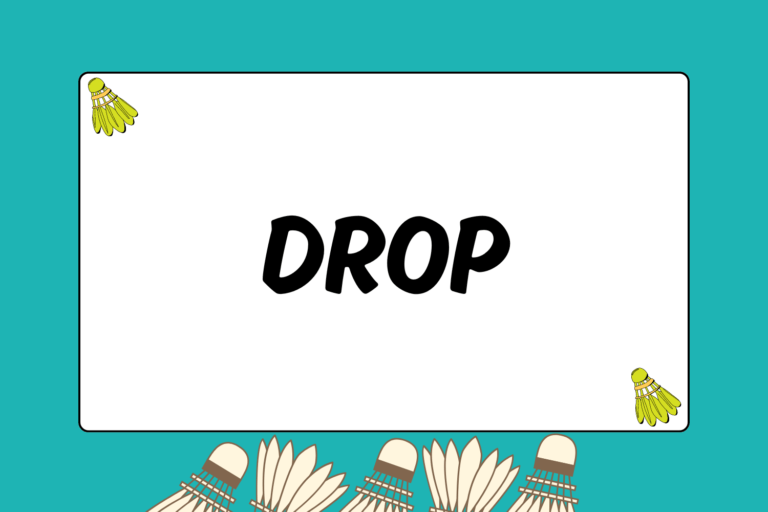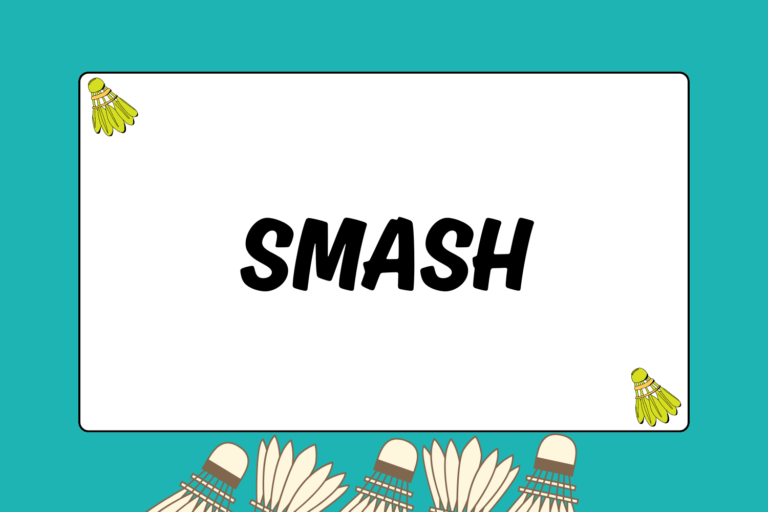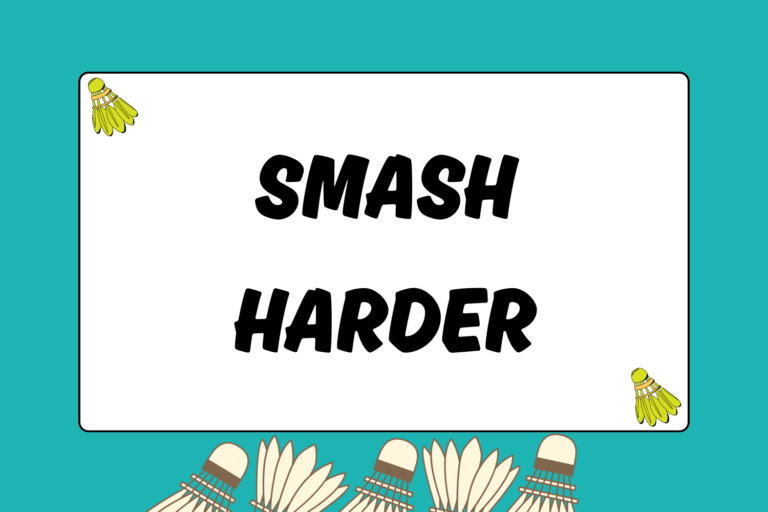Footwork in badminton is absolutely essential to playing the game well. Having good footwork will improve your stamina, shot execution, and shot selection — among other things. Footwork is so significant that it renders all other skills useless if not executed correctly.
Not only can it affect your shot, but it will determine if you can recover in time to return the next one. Fortunately, footwork is one of the easiest techniques to learn in badminton and it’ll take you a long way toward improving your overall game.
Shuffling Footwork
Shuffling your feet will constitute a majority of the footwork you do because it allows you to move around the court efficiently while still maintaining proper hitting form.
Shuffling is basically skipping sideways to either your right or left. This also applies to skipping backward, in which you rotate your body perpendicular to the net and shuffle in a similar fashion.
Your legs should be square with your body and move side-to-side. Regardless of your direction, your head should always be facing the net.
This shuffling motion will be the foundation for all your footwork except when you’re moving toward the net.
Choosing Your Base Point
The base point refers to the spot you return to after you hit a shot. Three factors will determine your base point at any given time:
- Type of game (singles or doubles)
- Your footwork strength
- Your opponent’s tendencies
Your ability to move backward or forward should displace your base point closer or farther from the net.
For example, if you have trouble moving backward to return shots, you should adjust your base to be somewhere between a half step and a full step away from the net.
In another scenario, if your opponent tends to drop a lot, you should move your base a half step forward. Similarly, if your opponent clears a lot, your base point should move back a half step.
In singles, your base should be somewhere along the center line and about a step or two behind the short service line. Don’t think of your base as an exact point to which you must return to after each shot. It is more of a reference point and a general area from which you play.
There is slightly more variance in doubles play. This is due to the different formations you and your partner will use.
Generally, you will have an offensive base and a defensive base. On offense, you and your partner will be front-back along the center line, with each of you covering either the front or back half of the court. Your offensive base should be somewhere along the center line, either near the short or long service line, depending on which half of the court you are covering.
On defense, you and your partner will be side-side, with each responsible for half of the court, split by the center line. Your defensive base should be a few steps behind the short service line and in the middle of the doubles sideline and center line.
Hot Tip: Bend Your Knees
A key part of executing proper footwork is correctly preparing for it.
Remember to bend your knees slightly and stay on your toes while waiting at your base point. Staying on your toes and keeping low will help you react quickly and give you more time to return the shuttlecock.
Footwork to the Back
This technique will be used for any movement toward the back of the court. You will be shuffling in a direction that is away from the net with your head facing forward:
- As you move back, keep your arms up with your elbows bent to form a 90-degree angle. Your racket should be on the side closest to the baseline. This positioning is absolutely vital, as it allows you to maintain proper hitting form as you move around the court.
- With your dominant side closest to the baseline, shuffle your feet back until you reach the shuttlecock.
- Before you strike the shuttlecock, check to see that your weak foot is forward, closer to the net, with your dominant foot back. Your weight should be shifted to the dominant foot, which is the foot on the same side of your body as the racket.
- After you swing, your dominant foot should come forward as you plant your weak foot on the floor.
- With that planted foot, you should push off to return to your base point. Make sure you are shuffling when you move forward.
Footwork used for backhand shots will require a slightly different technique than your forehand baseline shots. Essentially, you will shuffle your feet normally until just before you take your last step. At that moment …
- Rotate your dominant foot across your body and toward your backhand side. Make sure that you are rotating your body toward the net and not away from it.
- Plant your foot slightly behind you so that your back ends up facing the net.
- Bring your arm backward and use your backhand stroke for the shot.
- As you follow through, push off your planted foot to shift your momentum toward the net to help you return to your base point.
Footwork to the Front
Due to the lunging motion you’ll use when returning shots at the net, your footwork going forward will mostly consist of staying low while shuffling.
The last step you take before you strike the shuttlecock should be a lunge in which you step out with your dominant foot so you can reach farther with your racket.
Lunging is absolutely essential if you want your footwork to remain proper and efficient. Taking a shot too close to your body will make it harder to hit and more difficult to generate power.
Also, taking one large step instead of two smaller steps will save you time and energy.
Hot Tip: Shuffle Back, Run Forward
In certain cases, it will be wise to run forward instead of shuffling.
Shuffling forward to return to your base point allows you to move efficiently while staying balanced. However, if your opponent makes a drop shot while you’re still stuck at the baseline, shuffling forward will only slow you down. You must run forward to make up for your poor positioning.
Footwork to the Side
Footwork moving side to side will use the same technique as the footwork to the back, but you will be moving parallel to the net while facing it.
When moving toward your forehand side, you should lunge only when necessary to conserve energy.
For the backhand side, you should rotate your body toward the net, just like you would for your backhand baseline shot. You should not lunge for backhand shots because you’ll need a foot firmly planted and your body upright to generate power for your backhand.
Working it into the Game
Using footwork in a game setting will be drastically different from what you practiced. The game’s pace will be quicker, while the shots will be more aggressively placed.
There are footwork drills to help you better prepare for a game situation, but ultimately, the best experience you can gain is by actually playing.
Remember to stay balanced and maintain proper hitting form while monitoring your stamina throughout the game.
When you first begin to incorporate footwork into your game, keep thinking of it as practice. Do not get so hung up on winning that your footwork technique suffers. It’s not practice that makes perfect; it’s perfect practice that makes perfect!





